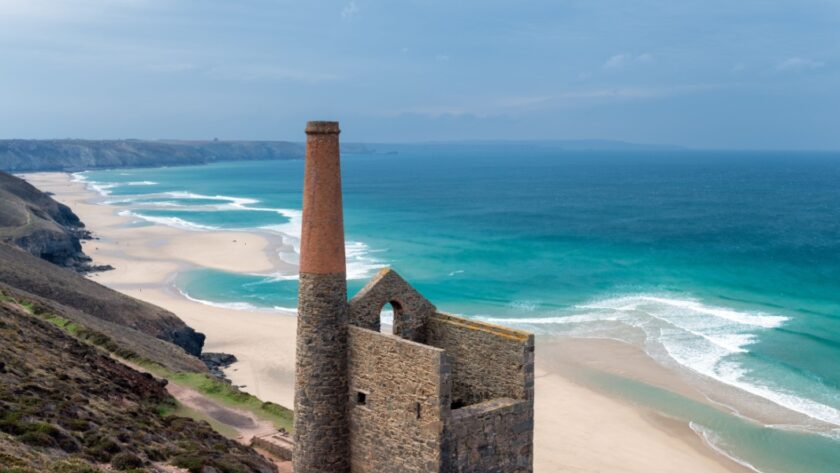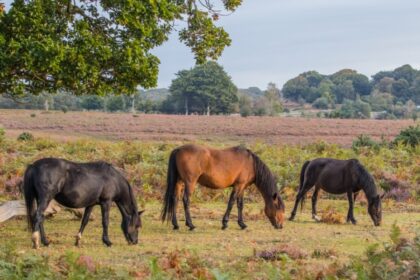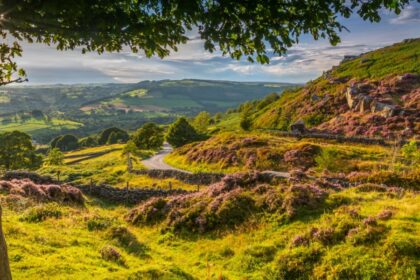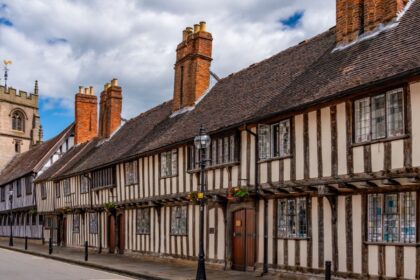At the far southwestern corner of England, Cornwall dangles into the sea like the last bit of land not quite ready to let go. It is a place of cliffs, fishing villages, mysterious standing stones and an alarming number of tales involving giants, smugglers, and occasionally both at the same time. Technically part of England, but often quietly feeling like its own slightly rebellious little country, Cornwall has always done things a bit differently.
Land of myths, mines and the odd mermaid
Cornwall’s landscape looks like it was designed by an enthusiastic tourist board. Rugged headlands, golden beaches, windswept moors and tiny coves where you half expect a shipwreck to appear at any moment. Add in tales of King Arthur at Tintagel, mermaids off Zennor, and a helpful giant who built St Michael’s Mount, and you quickly see why so many stories have taken root here.
In later centuries, Cornwall became famous for something a little less romantic but equally important: mining. For generations, Cornish tin and copper mines dug deep beneath the ground and beneath the sea. The miners’ distinctive engine houses, with their tall chimneys, now stand like stone skeletons along the cliffs, silent reminders of Cornwall’s global mining past.
Castles, cathedrals and curious landmarks
For a county of its size, Cornwall has a fine collection of castles and fortifications. Tintagel Castle clings dramatically to a cliff edge, forever associated with King Arthur whether the poor man was actually there or not. Pendennis Castle in Falmouth and its twin, St Mawes, were built by Henry VIII to deter unwanted visitors from the sea. Judging by the number of later shipwrecks, many visitors simply arrived unintentionally.
Inland, Truro Cathedral’s spires rise unexpectedly from the town centre, giving Cornwall its only cathedral and a rather grand one at that. It feels faintly surprised to find itself here.
Pirates, pasties and peculiar saints
No Cornish story would be complete without mentioning pirates and smugglers, who once treated the twisting coastline as one long invitation to mischief. The coves around Polperro, Mousehole and Looe once echoed with the sounds of barrels being quietly rolled ashore under cover of darkness.
Then there are the saints. Cornwall has a remarkable collection of local saints you will struggle to find anywhere else, from St Piran, patron saint of tin miners, to St Nectan, who rather wonderfully has his own waterfall near Tintagel. Quite why Cornwall ended up with so many saints remains one of life’s smaller mysteries.
Of course, there is also the Cornish pasty. Originally designed as a portable meal for miners, it now fuels visitors in their thousands, usually while they stare out to sea wondering if the weather will change again in the next ten minutes. It usually does.
Where the land finally gives up
Drive far enough west and you reach Land’s End, where England simply runs out. On a clear day, you can see the Isles of Scilly floating on the horizon like a scatter of pebbles. On a less clear day, you can simply enjoy the sensation of being about as far from London as you can get without needing a passport.
Further around the coast, St Ives tempts visitors with its beaches and art galleries, while nearby Penzance still carries faint echoes of its piratical past. Inland, Bodmin Moor spreads out under huge skies, dotted with tors, ancient stones and the occasional roaming pony.
History gently whispering on the wind
And yet, for all its castles, stories and visitor attractions, Cornwall is often at its most magical in the quiet places. Stand alone on a cliff path with nothing but the sea for company and you can almost hear the old tales being carried on the wind. It is that sort of place.





